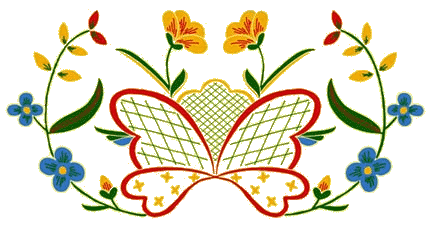
| Austin Scandinavian Dancing does three types of Scandinavian folk dancing. 1) The old regional or village bygdedans were more common before the 19th century and include the polska from Sweden, and springar and pols from Norway. These older dances are what we primarily focus on in our weekly dances. 2) Gammaldans (gammaldans means "old dance" in comparison to newer 20th century dances) includes waltz, schottis/ reinlender, polka, snoa and mazurka and sometimes hambo and are danced across Scandinavia. 3) Långdans från Sollerön is an example of a line dance, considered to be the oldest type of dance in Scandinavia. Important elements of both the village dances and gammal dans are the reliance on pivoting to complete the turns and their characteristic svikt patterns. |
Norwegian Dances | Swedish Dances | Gammal Dans | ||
| In Norway, each valley developed its own dance style. Pols are similar to Swedish polskas with some additional figures and turns. Springars and gangars are improvised figure dances, some also with a fast couple turn. More... | In Sweden, each village or parish developed its own variant of polska, a turning dance done to music with three sometimes unequal beats in a measure. Some of these dances are smooth and relaxed, others can be quite aerobic. More... | During the 19th century, many dances were introduced from Europe into Scandinavia. Such dances as vals (waltz), schottis and reinlender, polka, and mazurka often developed regional variations or figures based on the older traditional village dances. More... |
